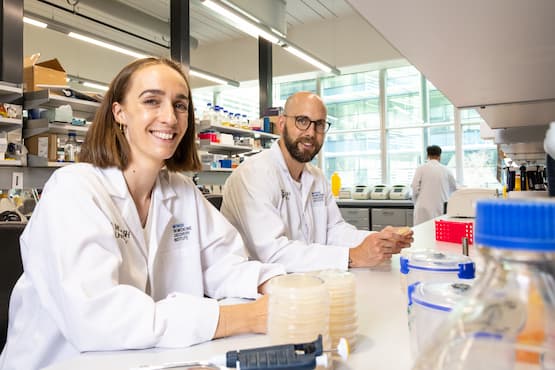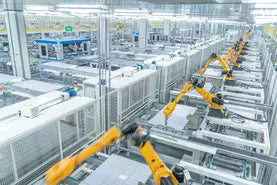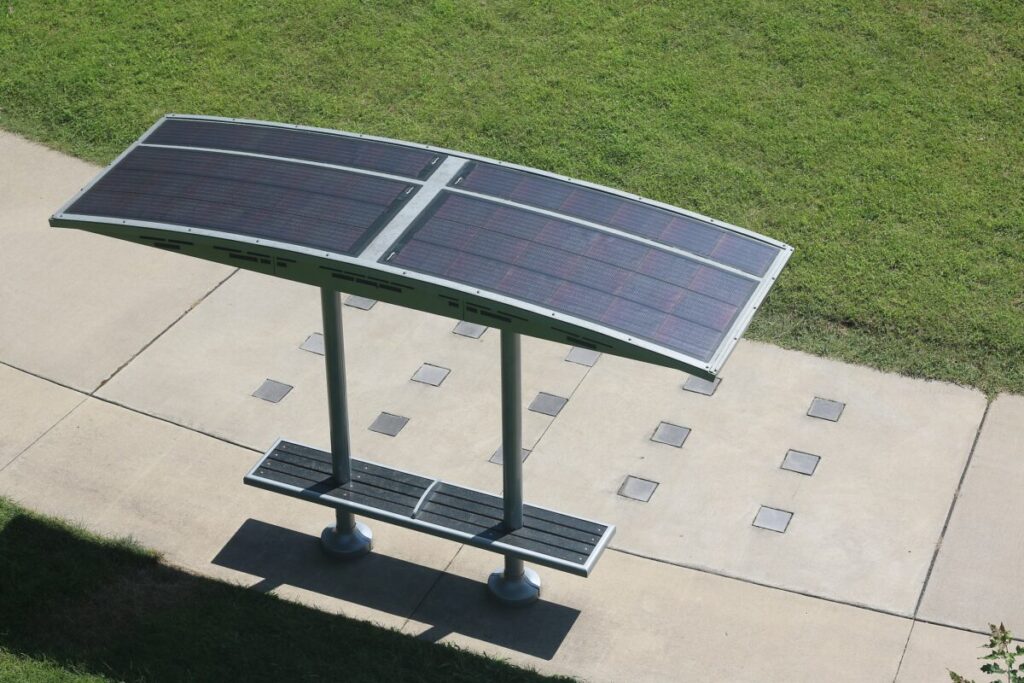https://www.pv-magazine-australia.com/2023/03/10/australian-scientists-discover-enzyme-that-turns-air-into-energy/
Australian scientists discover enzyme that turns air into energy

Monash University PhD student Ashleigh Kropp, left, and Dr Rhys Grinter.
Image: Monash University
Researchers at Victoria’s Monash University have isolated an enzyme that can convert minute concentrations of hydrogen in the atmosphere to produce a sustained electrical current, paving the way towards a future where devices are literally powered out of thin air.
The research team, led by Dr Rhys Grinter, PhD student Ashleigh Kropp, and Professor Chris Greening from the Monash University Biomedicine Discovery Institute in Melbourne, isolated and analysed the genetic code of an enzyme that enables a common soil bacteria to consume hydrogen and extract energy from it.
Their findings, published in the Nature journal, reveals that this “hydrogenase” enzyme, or Huc, uses the low amounts of the hydrogen in the atmosphere to create an electrical current.
“We’ve known for some time that bacteria can use the trace hydrogen in the air as a source of energy to help them grow and survive,” Greening said. “But we didn’t know how they did this, until now.”
A hydrogen molecule comprises two positively charged protons held together by a bond formed by two negatively charged electrons. The research team said Huc breaks this bond, the protons part ways, and the electrons are released. In the bacteria, these free electrons then flow into a complex circuit called the “electron transport chain” and are harnessed to provide the cell with energy.
Grinter said Huc is extraordinarily efficient, able to convert even minute concentrations of hydrogen directly into electricity, which can power an electrical circuit.
“Unlike all other known enzymes and chemical catalysts, it even consumes hydrogen below atmospheric levels – as little as 0.00005% of the air we breathe,” he said.
Laboratory work also shows that Huc is very stable, able to withstand temperatures from 80℃ down to -80℃ without activity loss. The research team also said the bacteria that produce enzymes like Huc are common and can be grown in large quantities, ensuring access to a sustainable source of the enzyme.
The scientists acknowledged that it is early days for the research and said several technical challenges will need to be overcome to realise the potential of Huc as a power source.
“For one thing, we will need to significantly increase the scale of Huc production,” they said. “In the lab we produce Huc in milligram quantities, but we want to scale this up to grams and ultimately kilograms.”
“Once we produce Huc in sufficient quantities, the sky is quite literally the limit for using it to produce clean energy,” Grinter said.
This content is protected by copyright and may not be reused. If you want to cooperate with us and would like to reuse some of our content, please contact: editors@pv-magazine.com.
<




